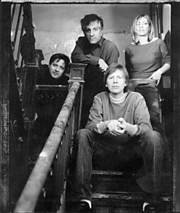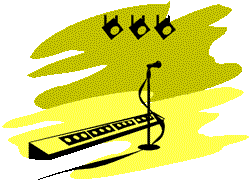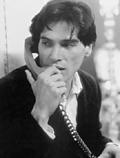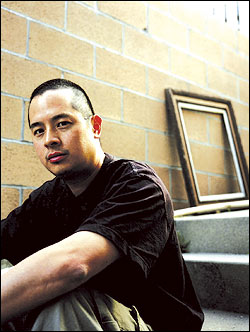JUST A DECADE AGO, the idea of Sonic Youth playing a jazz festival would have elicited bewilderment if not outright derision—and not just from the jazz community. Sure, the New York quartet’s pealing, clanging overtones brought plenty of jazz-identified forebears to mind: Sonny Sharrock and John McLaughlin could be heard within Thurston Moore and Lee Ranaldo’s interlocking guitars, the group could freak out on a theme with as much free-improv abandon as Coltrane or Ayler or Ornette, and they did get the Sun Ra Arkestra to open a memorable 1992 concert at Central Park’s Summerstage. But in the high grunge era, the band whose principled example earned them more respect from the newly ascendant alternative camp than anyone still working was considered . . . well, a rock band, albeit a really weird one. But a jazz festival? These guys were lucky to be opening for Neil Young.
Sonic Youth
Moore Theatre, Thursday, July 20
Now, of course, everything’s changed—including Sonic Youth, who seem less like a rock band than ever, even though their music is, loosely speaking, still rock. Their evolution from hardcore-inspired thrashers to textural explorers, however, certainly earned them the right to appear as one of the headliners at the famed Montreux Jazz Festival last week. “Maybe being asked to play was a little bit surprising,” allows Ranaldo over the phone following a soundcheck at the Miles Davis Hall. “But at this point, they’re having Deep Purple, Suzanne Vega, and Henry Rollins play them, so they’re not really jazz festivals anymore anyway. But, you know, when we’re advertised as playing, our audience comes. So it’s not too different from playing any other show.”
Still, Sonic Youth’s appearance at both Montreux and a Copenhagen jazz festival the week before is a tribute to the band’s part in bringing all types of avant-garde music to a wider audience. In the new issue of The Wire, Yo La Tengo member Ira Kaplan’s two-word answer to the question of indie-rockers’ sudden infatuation with free-improv and experimental music is: “Thurston Moore”— and it’s not much of an exaggeration. Still, Ranaldo insists that Sonic Youth aren’t purposely pushing for any sort of paradigm shift.
“People ask what we’re listening to and we tell them,” he says. “Maybe our tastes move ahead of the curve a little bit. But it’s been interesting to us that all these young indie-rock kids are listening to Edgard Varese and Albert Ayler and Sun Ra, whereas 10 years ago, people wanted to be the next Nirvana or Pavement. So it’s made the underground a little more underground, in a way. I think it’s good, because those kids are doing it for the sake of music and not because they’re interested in getting rich off it.”
Sonic Youth aren’t necessarily rich, but they enjoy a comfortable status. They’re able to reach a large, if not necessarily huge, audience via their DGC albums and they can record as much experimentica as their hearts desire on their self-run indie imprints (drummer Steve Shelley’s Smells Like Records, Moore’s Ecstatic Peace, the collectively run SYR).
The bristling, beautiful new NYC Ghosts & Flowers is testament to this freedom. For nearly anyone else, a drifting, nearly hookless record that features as much speaking as singing would be unlikely major-label fodder. But as with every album Sonic Youth have made since 1986’s Evol, Ghosts & Flowers builds on previous strengths—in this case, the absorbing languidity of 1998’s A Thousand Leaves. It’s as if Sister had followed Daydream Nation instead of the other way around, with Ghosts & Flowers condensing its predecessor’s epic, relaxed maximalism into rougher, rawer pieces. “Free City Rhymes” is as lovely as anything the group has ever recorded; “Nevermind (What Was It Anyway?)” and “Side2Side” find their pop instincts as bent as ever. It’s less immediately appealing than most Sonic Youth albums, but a few listens reveal it as only a notch below par.
Ghosts & Flowers‘ most noticeable change comes from its vocal approach: The songs “Small Flowers Crack Concrete” and “NYC Ghosts & Flowers” are basically poems read aloud (by Thurston and Lee, respectively) over the music. “It was sort of an accident that it turned out that way,” says Ranaldo. “Each of us squirrels away and works on words after the music has been divided out. Maybe it’s vibes in the air, but we didn’t really plan on all three of us doing spoken word like that. I’ve been doing a lot of that kind of thing the past couple years, like Dirty Windows, a solo album I put out on Atavistic last year. But it fits the album; it’s got a real New York feel to it.”
Where Sonic Youth go next is anybody’s guess, though several collaborations are already in the can: Gordon’s trio with ex-DNA drummer Ikue Mori and illbient DJ Olive, some sessions featuring the whole band augmented by Icelandic Powerbook-techno trio Stilluppsteypa, Ranaldo’s work with the Master Musicians of Jajouka. (He’s also editing his journals of his trip to Morocco for a forthcoming book.) If anything, after 19 years and an impressive catalog of classic albums, Sonic Youth seem to be just getting started.
“If there wasn’t something we still wanted to accomplish, we wouldn’t be a band,” says Ranaldo. “People will come up to us and say we were formative influences on their tastes, and it’s great—some grew up listening to Sister or Daydream Nation, some to Goo or Washing Machine. And what we’re doing is always expanding—we’re really happy to see it branch out in a lot of different directions, and we just try not to get overly conceptual about it.”








